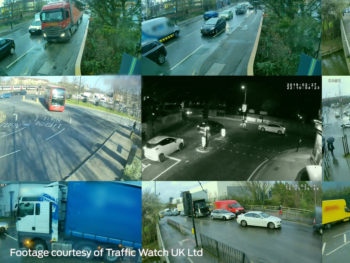‘Hidden’ accident blackspots revealed in Ford connected vehicle trial
Data provided in a connected vehicle trial by Ford is being provided to cities in Europe to help them anticipate and mitigate future incidents.

Ford has been working with Traffic Watch UK to capture and analyse road-user activity from eight of the highest-ranking safety hot-spots
Carried out by Ford Mobility in Europe, the two-year study into how connected vehicles and advanced analytics can help make travelling in cities easier and safer shows why some city junctions are potentially more dangerous than others.
Mobility experts from Ford’s City Insights (formerly City Data Solutions) team revealed last year how ‘near-miss’ event data, identified by indicators such as sharp braking or hazard light usage, collected from a year-long study of connected vehicles across London could – when correlated with historical accident data – be used to identify which stretches of road were most likely to experience a road safety incident in the future.
Now this big data analytics has been combined with detailed on-site observations in London with the help of UK-based traffic management company Traffic Watch UK. The work has already shown how relatively simple improvements to roads and junctions could help address safety issues identified at major traffic incident hot-spots. This includes measures such as cutting back overgrown trees and installing traffic light cameras.
“It is probably no coincidence that where Ford’s analysis identified harsh braking and steering, we also found evidence of traffic light offences and obscured road signs,” said Amanda Wickens, managing director, Traffic Watch UK. “Without a doubt, there is a real opportunity for intelligent connected technology and vehicle data analysis to help reduce the occurrence of road incidents in the future.”
Ford is now working with the cities of Valencia, Spain and Cologne, Germany to identify further opportunities for the data analysis programme.

